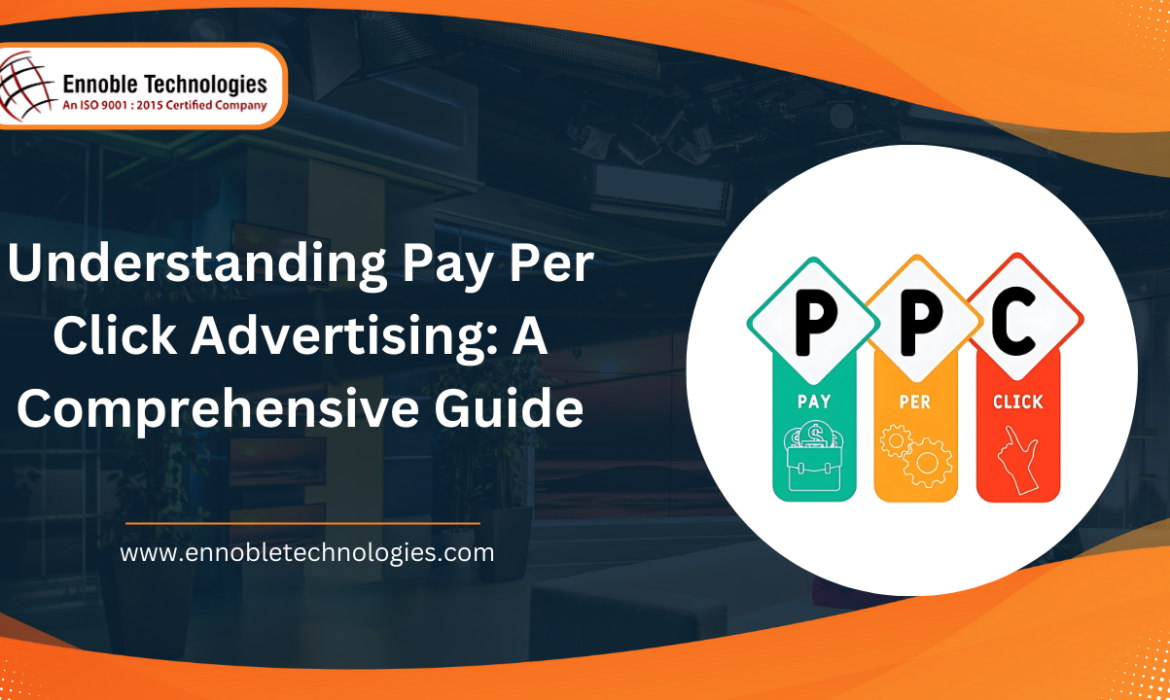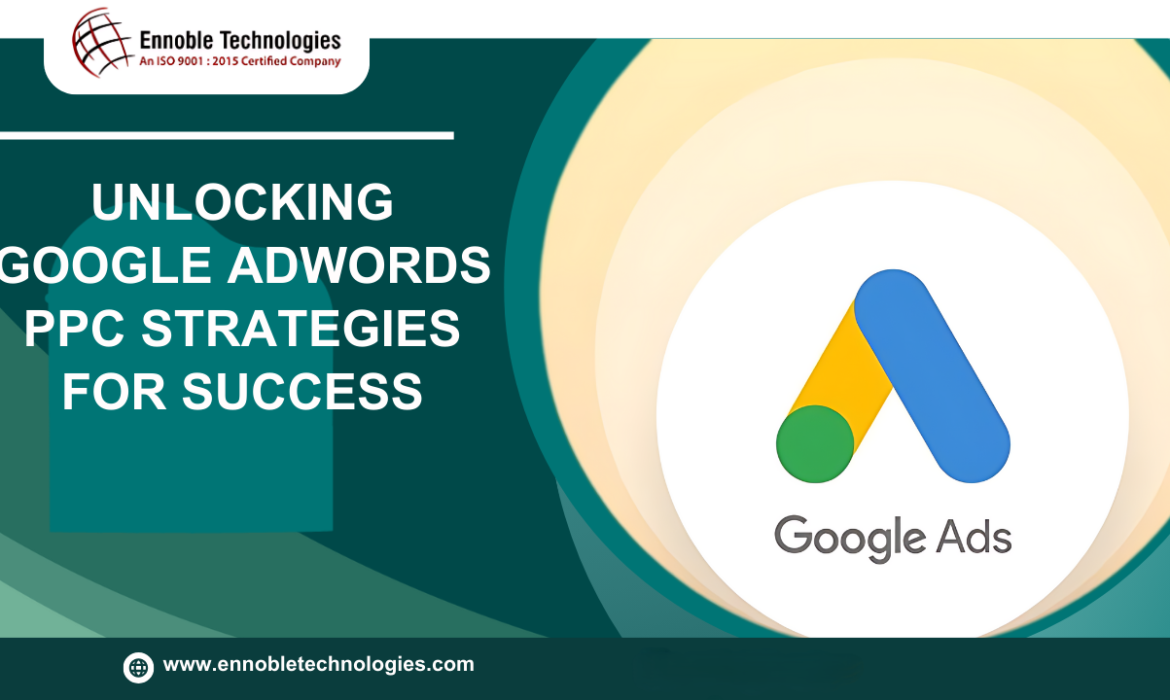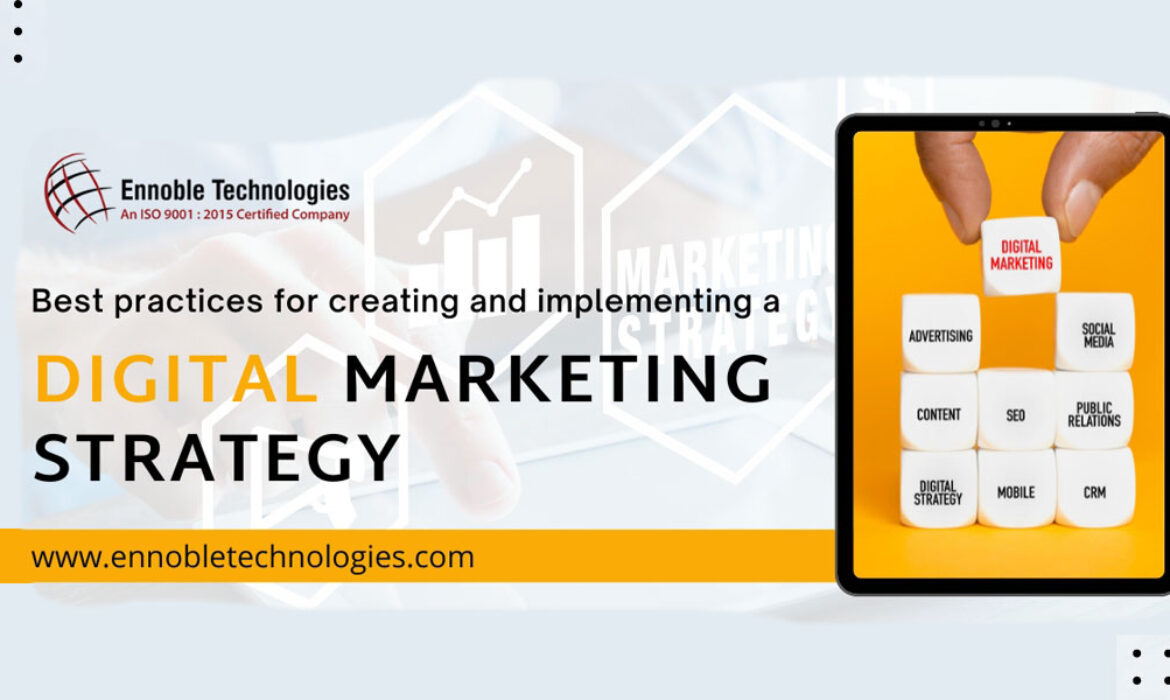Understanding Pay Per Click Advertising: A Comprehensive Guide
Understanding the intricacies of Pay Per Click Advertising (PPC) is essential for businesses aiming to drive targeted traffic and achieve measurable results in their digital marketing campaigns. At Ennoble Technologies, we specialize in crafting effective PPC strategies that maximize ROI and drive business growth. In this comprehensive guide, we explore the fundamentals, strategies, and best practices of Pay Per Click Advertising.
What is Pay Per Click Advertising?
Pay Per Click Advertising (PPC) is a digital marketing model where advertisers pay a fee each time their ad is clicked. It’s a cost-effective way to drive immediate traffic to your website, as ads appear prominently on search engine results pages (SERPs) and relevant websites within the advertising network.

Key Components of Pay Per Click Advertising
- Ad Auctions: PPC ads are placed through auctions where advertisers bid on keywords relevant to their target audience. Ad placement is determined based on bid amount, ad quality, and ad extensions.
- Ad Rank: Ad position on SERPs is determined by a combination of bid amount and Quality Score. Quality Score is influenced by ad relevance, expected CTR (Click-Through Rate), and landing page experience.
- Campaign Structure: PPC campaigns are structured into ad groups containing related keywords and ads. This organization ensures targeted messaging and effective budget management.
Benefits of Pay Per Click Advertising
- Immediate Results: Unlike organic search engine optimization (SEO), PPC ads can drive immediate traffic to your website, making it an ideal strategy for businesses looking to generate leads quickly.
- Targeted Audience: PPC allows precise targeting based on demographics, interests, behaviors, and location, ensuring your ads reach the right audience at the right time.
- Measurable ROI: PPC platforms provide detailed metrics such as CTR, conversion rate, and cost-per-conversion, allowing advertisers to measure the effectiveness of their campaigns and optimize accordingly.
Strategies for Effective Pay Per Click Advertising

- Keyword Research: Conduct thorough keyword research to identify high-intent keywords relevant to your products or services. Use tools like Google Keyword Planner and competitor analysis to discover valuable keywords.
- Ad Copywriting: Write compelling ad copy that addresses user intent and highlights unique selling propositions (USPs). Use clear CTAs (Call to Actions) to encourage clicks and conversions.
- Landing Page Optimization: Design optimized landing pages that align with your ad messaging and facilitate seamless user experiences. Ensure fast loading times, clear value propositions, and easy navigation.
- Ad Extensions: Utilize ad extensions such as sitelinks, callouts, and structured snippets to enhance ad visibility and provide additional information to potential customers.
Measuring Success
Success in Pay Per Click Advertising is measured by achieving your campaign objectives, whether it’s increasing website traffic, generating leads, or driving sales. Key metrics to monitor include:
- Click-Through Rate (CTR): Percentage of users who click on your ad after seeing it.
- Conversion Rate: Percentage of users who complete a desired action (e.g., purchase, sign-up) after clicking on your ad.
- Return on Investment (ROI): Measure of revenue generated compared to the cost of running ads.
Conclusion
Understanding Pay Per Click Advertising is crucial for leveraging its potential to drive targeted traffic and achieve business growth. By partnering with Ennoble Technologies, businesses can implement strategic PPC campaigns that deliver measurable results and maximize ROI. Implement these strategies, monitor performance closely, and continuously optimize your campaigns to stay ahead in the competitive digital landscape.
Read more: Effective SEO Strategies for International Online Presence
Unlocking Google AdWords PPC Strategies for Success
Achieving success with Google AdWords PPC (Pay-Per-Click) advertising demands a strategic and methodical approach. Ennoble Technologies specializes in crafting tailored PPC campaigns designed to maximize ad visibility, clicks, and conversions. In this comprehensive guide, we delve into essential strategies to optimize your PPC campaigns on Google Ads, ensuring you reach your business objectives effectively.
Understanding Google AdWords PPC
Google AdWords PPC is a potent advertising platform where advertisers bid on keywords to display clickable ads in Google’s search results. The core strategy revolves around targeting relevant keywords, crafting compelling ad copy, and optimizing bids to achieve the best return on investment (ROI).
Key Strategies for Google AdWords PPC
1. Keyword Research
Effective PPC campaigns start with thorough keyword research. Utilize tools like Google Keyword Planner to identify high-converting keywords relevant to your business. Evaluate search volumes, competition levels, and bid estimates to prioritize your chosen keywords effectively.
2. Ad Copy Optimization
Compelling ad copy is crucial for enticing clicks and conversions. Highlight your unique selling propositions (USPs) prominently in your ad text. Incorporate ad extensions such as sitelinks, callouts, and structured snippets to enhance visibility and engagement.
3. Targeting Options
Google Ads offers robust targeting options to ensure your ads reach the most relevant audience segments. Segment by demographics, location, device type, and specific interests to maximize the relevance of your ads and improve conversion rates.
4. Bid Management
Optimize your bids strategically to achieve optimal ad placements on search engine results pages (SERPs). Regularly adjust bids based on keyword performance, competition levels, and desired ad position goals to maintain a cost-effective approach.
5. Quality Score Optimization
Improving your ad’s Quality Score is pivotal in lowering your Cost-Per-Click (CPC) and improving ad placement. Focus on enhancing ad relevance, expected click-through rate (CTR), and landing page experience to boost your Quality Score effectively.
Tools and Analytics
1. Conversion Tracking
Implement conversion tracking within Google Ads to measure the effectiveness of your campaigns accurately. Track essential actions such as form submissions, purchases, and sign-ups to identify which keywords and ads drive the most valuable conversions.
2. Google Analytics Integration
Integrate Google Analytics with Google Ads for deeper insights into user behavior, traffic sources, and overall campaign performance. Leverage these insights to refine your PPC strategies continuously and allocate your budget effectively across campaigns.
Best Practices for Google AdWords PPC

1. Continuous Monitoring and Optimization
Regularly monitor key performance metrics such as Click-Through Rate (CTR), conversion rate, and ROI. Implement A/B testing for ad variations and landing pages to determine which elements resonate best with your target audience.
2. Ad Budget Management
Strategically allocate your ad budget across campaigns and ad groups based on performance data. Adjust budgets to prioritize high-performing campaigns and reallocate funds to maximize overall campaign effectiveness.
3. Ad Schedule Optimization
Utilize ad scheduling to display your ads during peak times when your target audience is most active. Adjust bids for specific days or hours to capitalize on high-converting periods and optimize your ad spend efficiently.
Measuring Success
Success in Google AdWords PPC is measured by achieving your campaign objectives, whether it’s increasing website traffic, generating leads, or driving sales. Key metrics to monitor include:
- Click-Through Rate (CTR): The percentage of users who click on your ad after seeing it.
- Conversion Rate: The percentage of users who complete a desired action (e.g., purchase, sign-up) after clicking on your ad.
- Return on Investment (ROI): A measure of revenue generated compared to the cost of running ads, indicating the profitability of your campaigns.
On a final note:
Unlocking success with Google AdWords PPC requires a strategic, data-driven approach. By leveraging Ennoble Technologies’ expertise in PPC advertising, you can optimize your campaigns, effectively reach your target audience, and achieve your business goals. Implement these strategies, closely monitor performance metrics, and continuously refine your approach to stay competitive in the dynamic digital landscape.
Read More: The Ultimate Guide to Lead Generation in Digital Marketing
Best Practices for Creating and Implementing a Digital Marketing Strategy
Digital marketing has had a great influence on the business world. It doesn’t matter whether someone is managing a giant company or running a small business. Digital marketing allows them to achieve their market goal and help to gain success at a reasonable cost. However, creating and implementing the right digital marketing strategy is necessary if you wish to hear success from your business.
Not to mention, there are tons of tactics and platforms available, but it can be difficult to decide which one to pick and which one to avoid. Yet, we have brought you this article which aims to provide you with satisfying answers to your digital marketing questions. Here, we’ll go over some best practices for creating and implementing a digital marketing strategy that will help you get the most out of your efforts.
Best Practices for Creating and Implementing a Digital Marketing Strategy
- Set Your Market Goal
The first step in creating a digital marketing strategy would be to be specific about your goals. What do you want to achieve through your marketing efforts? Are you looking to increase brand awareness and sales or build more networks? Your goals will help you guide the rest of your strategy and make important decisions about the tactics you use.
- Get Close to Your Target Audience
Once you have defined your goals and got a rough image, you need to understand who your target audience is. With your marketing efforts, who do you hope to reach? What are their pain points? What are their interests? Understanding your target audience will help you create content and strategies that resonate with them and increase the chances of converting them into customers. If your product or service is solving their problem, your customers will become loyal.
- Develop a Content Marketing Plan
One of the most effective ways to reach your target audience and achieve your goals is through content marketing. This involves creating valuable and relevant content that your target audience will find useful, such as blog posts, videos, and infographics. To develop a content marketing plan, you’ll need to be good at researching keywords, creating a content calendar, and developing a distribution plan.
- Take Advantage of Paid Advertising
Paid advertising can be a great way to drive traffic to your website and increase sales. Platforms like Google AdWords and Facebook Ads allow you to create campaigns that reach your target audience. However, it’s important to track the results of your campaigns and adjust them as needed to ensure that you’re getting good results and are on the right path.
- Try Influencer Marketing
Influencer marketing involves working with people who have a large following on social media or other platforms to promote your products or services. This can be a great way to reach a new audience and build trust with them. To be successful with influencer marketing, you’ll need to research and find the right influencers for your brand. Create good campaigns that match their audience, and results will be in your favour.
- Consider Video Marketing
Video marketing is another way to reach and engage your target audience. Platforms like YouTube and Instagram allow you to create videos that can be shared and viewed by millions of people. To be successful with video marketing, you’ll need to create eye-catching content that describes your brand and represents your target audience.
- Seek Help from Artificial Intelligence (AI)
Chatbots and AI are becoming popular in digital marketing. They can be used to automate things such as customer service. By using chatbots and AI, you can increase conversions and improve the customer experience by understanding their requirements and fulfilling their needs. If your business is more focused on customer servitude, you’ll soon notice the demand for your brand/ services.
- Embrace Automation
Marketing automation can help you save time and increase efficiency by automating repetitive tasks. Several platforms offer you to automate tasks like email marketing, social media, and other such things. By automating some of your daily repetitive tasks, you can free up time to focus on other important business tasks and increase your sales.
- Stay Up-to-Date with the Latest Trends
Finally, staying up-to-date with digital marketing trends is crucial. This includes new technologies, platforms, and strategies that can help you reach your target audience and achieve your goals. By staying up-to-date, you’ll be able to take advantage of new opportunities and stay ahead of the competition.
- Keep the Results in Mind
At last, you would want to monitor the results of your digital marketing efforts. By doing this, you will be able to understand what is working and what is not working. You will be able to make adjustments and come up with new ideas as needed. Platforms like Google Analytics lets you track important metrics like website traffic and conversion rates. If things aren’t working the way you wish, you can make new changes instantly and save your money, time, and effort from getting wasted.
Conclusion
Today, we discussed creating and implementing a digital marketing strategy, which is crucial for any business looking to grow and succeed. By following these practices, you can develop a strategy that aligns with your business goals and effectively reaches your target audience.
Whether it’s through paid advertising, influencer marketing, video marketing, or automation, digital marketing offers a wide range of options to choose from. But it’s also important to remember that creating a strategy is just the first step. Continuously tracking your actions based on the results is the next step to take if you want to achieve long-term success.
You should also try to follow the latest trends and technologies in digital marketing. By keeping an eye on the latest trends, you can stay ahead of the competition and change your strategy as needed.
Ultimately, a successful digital marketing strategy should be about understanding your audience, delivering value, and building trust with them. By putting your customers first and focusing on their needs, your business will get successful.
Want to explore more about the benefits of Digital Marketing? Talk to us. Call us on Phone: +91 9121010610 / +91 9100625301 or write to us at info@ennobletechnologies.com
You can learn more about our services or browse through our story at https://ennoblegrp.com/






